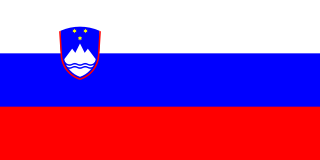
Slovenia, officially the Republic of Slovenia, is a country in southern Central Europe. Slovenia is bordered by Italy to the west, Austria to the north, Hungary to the northeast, Croatia to the south and southeast, and a short coastline within the Adriatic Sea to the southwest. Slovenia is mostly mountainous and forested, covers 20,271 square kilometres (7,827 sq mi), and has a population of 2.1 million. Slovenes constitute over 80% of the country's population. Slovene, a South Slavic language, is the official language. Slovenia has a predominantly temperate continental climate, with the exception of the Slovene Littoral and the Julian Alps. A sub-mediterranean climate reaches to the northern extensions of the Dinaric Alps that traverse the country in a northwest–southeast direction. The Julian Alps in the northwest have an alpine climate. Toward the northeastern Pannonian Basin, a continental climate is more pronounced. Ljubljana, the capital and largest city of Slovenia, is geographically situated near the centre of the country.

Slovene or Slovenian is a Western member of South Slavic languages, which belong to the Balto-Slavic branch of the Indo-European language family. Most of its 2.5 million speakers are the inhabitants of Slovenia, majority of them ethnic Slovenes. As Slovenia is part of the European Union, Slovene is also one of its 24 official and working languages. Its syntax is highly fusional and characterized by dual grammatical number. Two accentual norms are used. Its flexible word order is often adjusted for emphasis or stylistic reasons, although basically it is a SVO language. It has a T–V distinction: the use of the V-form demonstrates a respectful attitude towards superiors and the elderly, while it can be sidestepped through the passive form.
Corpus linguistics is the study of a language as that language is expressed in its text corpus, its body of "real world" text. Corpus linguistics proposes that a reliable analysis of a language is more feasible with corpora collected in the field—the natural context ("realia") of that language—with minimal experimental interference. The large collections of text allow linguistics to run quantitative analyses on linguistic concepts, otherwise harder to quantify.
Word-sense disambiguation (WSD) is the process of identifying which sense of a word is meant in a sentence or other segment of context. In human language processing and cognition, it is usually subconscious/automatic but can often come to conscious attention when ambiguity impairs clarity of communication, given the pervasive polysemy in natural language. In computational linguistics, it is an open problem that affects other computer-related writing, such as discourse, improving relevance of search engines, anaphora resolution, coherence, and inference.

In a purely dialectological sense, Slovene dialects are the regionally diverse varieties that evolved from old Slovene, a South Slavic language of which the standardized modern version is Standard Slovene. This also includes several dialects in Croatia, most notably the so-called Western Goran dialect, which is actually Kostel dialect. In reality, speakers in Croatia self-identify themselves as speaking Croatian, which is a result of a ten centuries old country border passing through the dialects since the Francia. In addition, two dialects situated in Slovene did not evolve from Slovene. The Čičarija dialect is a Chakavian dialect and parts of White Carniola were populated by Serbs during the Turkish invasion and therefore Shtokavian is spoken there.

The Slovene Wikipedia is the Slovene-language edition of the free online encyclopedia Wikipedia. It has been active since 26 February 2002. On 15 August 2010, it reached 100,000 articles. As of March 2024, it has about 185,000 articles.
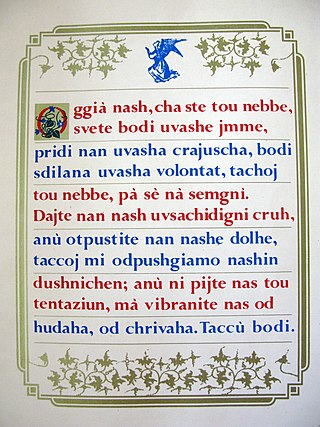
The Resian dialect or simply Resian is a distinct variety in the South Slavic continuum, generally considered a Slovene dialect spoken in the Resia Valley, Province of Udine, Italy, close to the border with Slovenia.

Primož Jakopin, born 30 June 1949 is a Slovenian computer scientist, known for his work in the field of language technology and his contribution to speleology.

Slovenia has been a meeting area of the Slavic, Germanic, Romance, and Uralic linguistic and cultural regions, which makes it one of the most complex meeting point of languages in Europe. The official and national language of Slovenia is Slovene, which is spoken by a large majority of the population. It is also known, in English, as Slovenian. Two minority languages, namely Hungarian and Italian, are recognised as co-official languages and accordingly protected in their residential municipalities. Other significant languages are Croatian and its variants and Serbian, spoken by most immigrants from other countries of former Yugoslavia and their descendants. Slovenia is ranked among the top European countries regarding the knowledge of foreign languages. The most often taught foreign languages are English and German, followed by Italian, French, and Spanish.
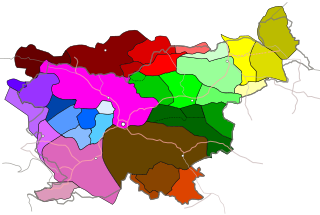
Prekmurje Slovene, also known as the Prekmurje dialect, East Slovene, or Wendish, is a Slovene dialect belonging to a Pannonian dialect group of Slovene. It is used in private communication, liturgy, and publications by authors from Prekmurje. It is spoken in the Prekmurje region of Slovenia and by the Hungarian Slovenes in Vas County in western Hungary. It is closely related to other Slovene dialects in neighboring Slovene Styria, as well as to Kajkavian with which it retains a considerable degree of mutual intelligibility and forms a dialect continuum with other South Slavic languages.

Alojz Rebula was a Slovene writer, playwright, essayist, and translator, and a prominent member of the Slovene minority in Italy. He lived and worked in Villa Opicina in the Province of Trieste, Italy. He was a member of the Slovenian Academy of Sciences and Arts.
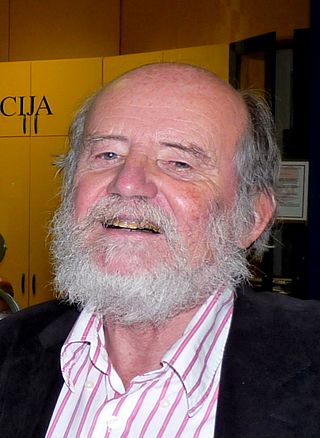
Mitja Saje is a Slovenian sinologist.
Slovenian National Corpus FidaPLUS is the 621 million words (tokens) corpus of the Slovenian language, gathered from selected texts written in Slovenian of different genres and styles, mainly from books and newspapers.

Branko Gradišnik is a Slovene writer and translator. He writes short stories and is a well-known columnist that writes for the newspaper Delo and other Slovene publications. In 2004 he was a candidate for mayor of Ljubljana.

Jurij Hudolin is a Slovene poet, writer, columnist and translator. He has published a number of poetry collections and novels and is known for the rich language he uses and a rebellious rejectionist stance towards the world.
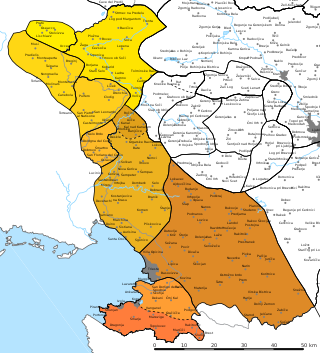
This article uses Logar transcription.

Janko Premrl was a Slovene Partisan.
Gorazd Kocijančič is a freelance Slovene philosopher, poet and translator. Kocijančič is well known for his translation of the entire corpus of Plato's work into Slovene.

Miran Hladnik is a Slovenian literary historian, specializing in quantitative analysis of Slovene rural stories and in Slovene historical novel.
Primož Repar is a Slovenian poet, writer, philosopher, translator, essayist, editor, publisher and organizer of international cultural and scientific / professional events, workshops, festivals, conferences, symposia, various scientific and professional research, and other initiatives at home and abroad.














